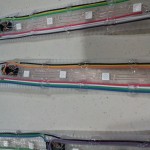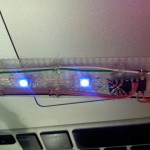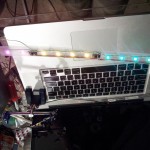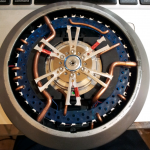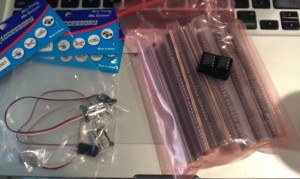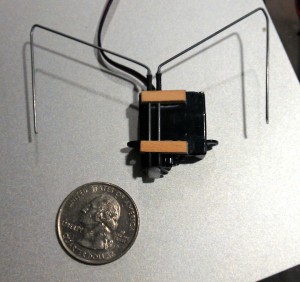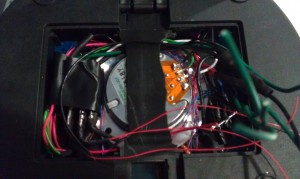Check out all those beautiful, straight, smooth swaths of wire! Gorgeous, right? It took dozens of tedious hours to make.
One problem. Data apparently goes through them at 2MHz, which means they’re basically turned into radio antennae – and since they’re all nice and parallel, there’s more “interference” than there is “signal”.
The poor umbrella flashes and flickers in a manner best described as “grand mal”, no matter what it’s supposed to do. It’s time to rip out all that beautiful cabling and replace it with twisted-pair wire (and add terminating resistors). Sigh.

